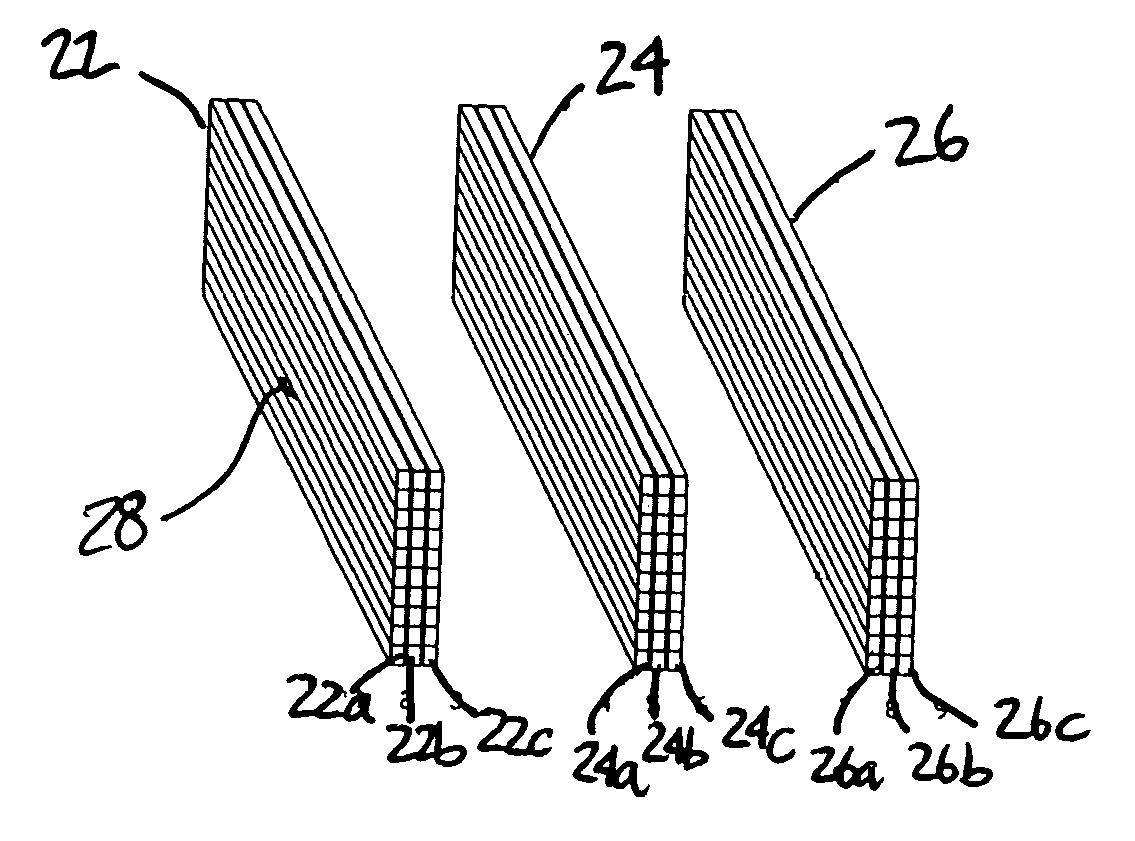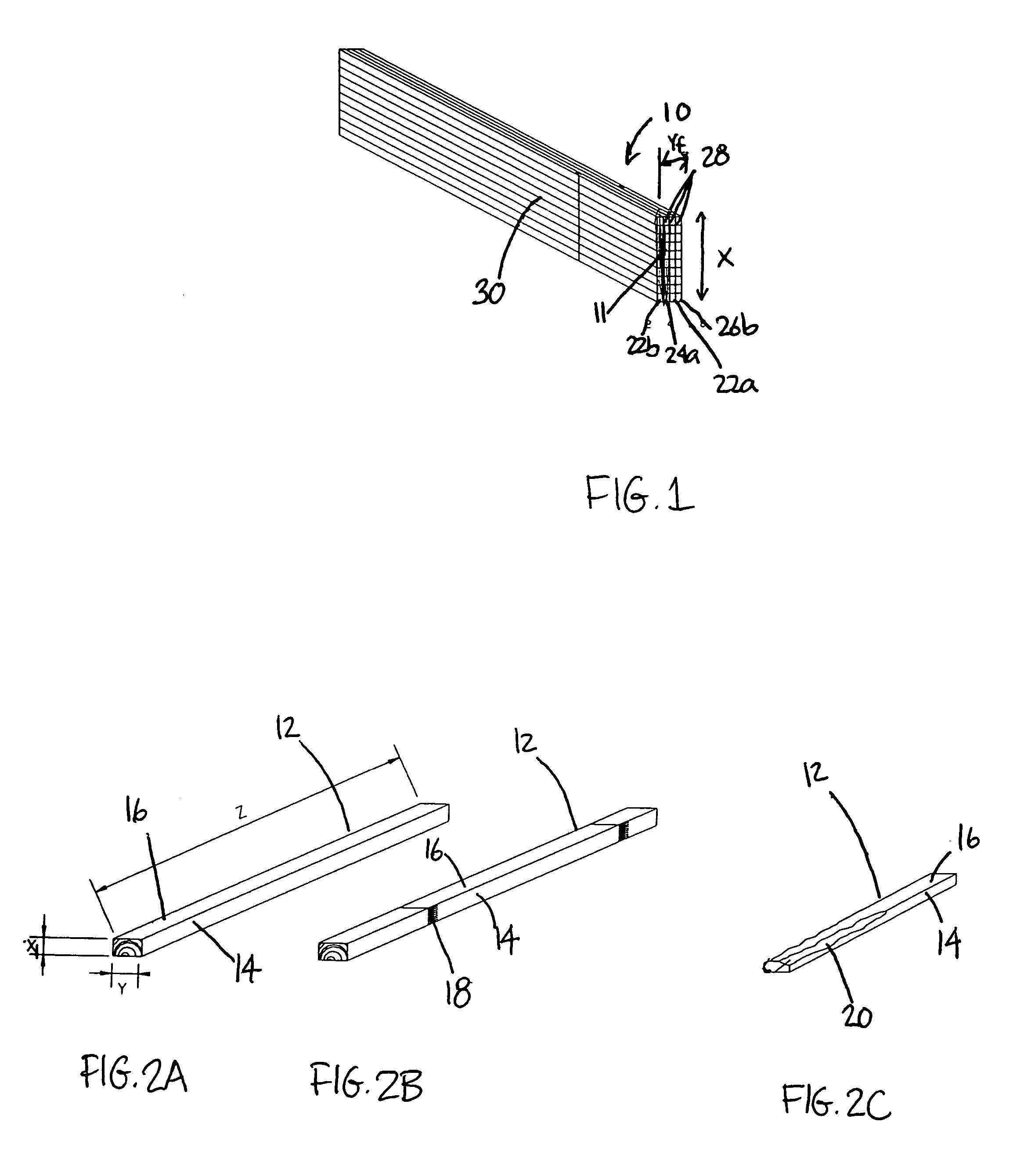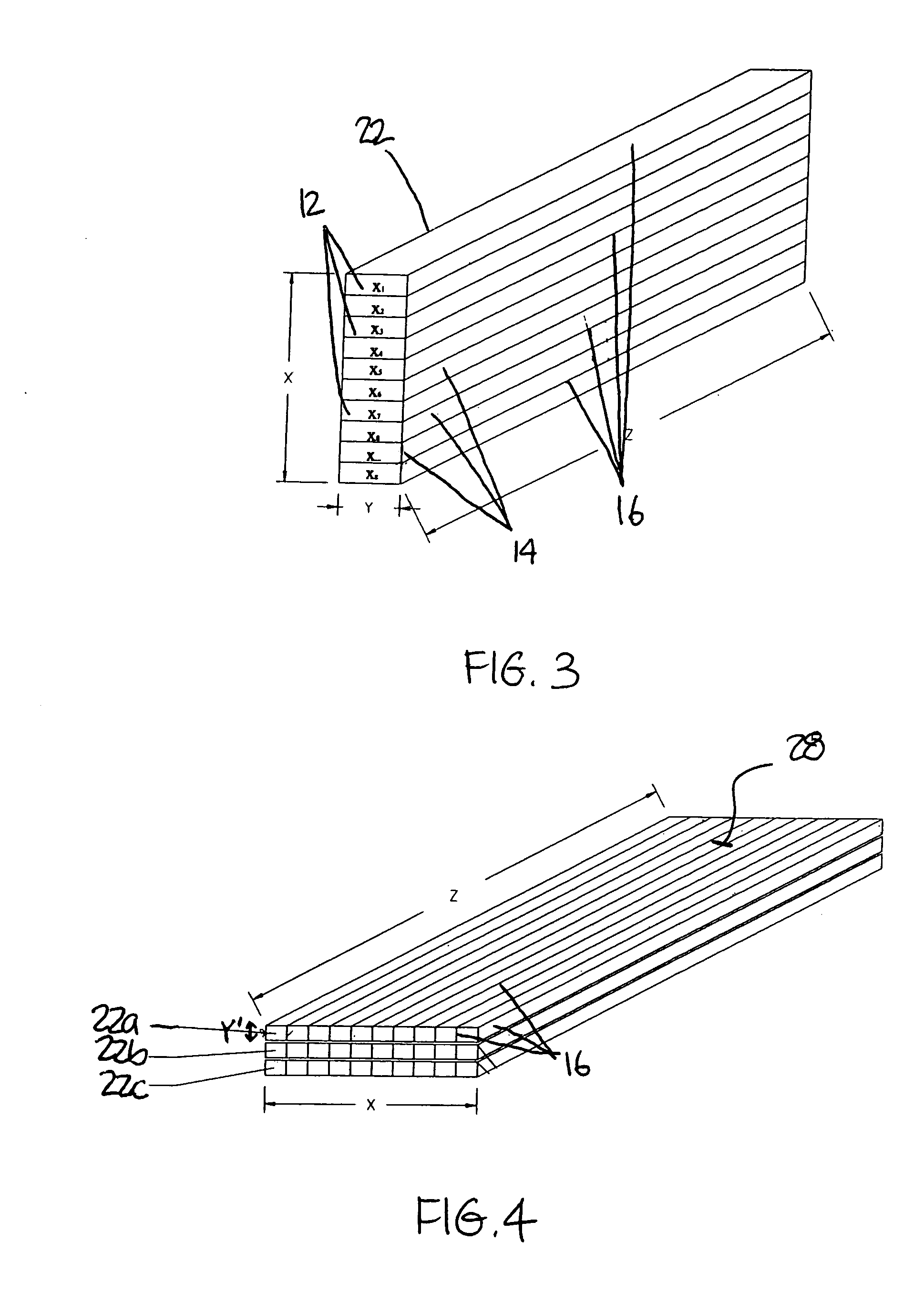Laminated cross lumber and method of making same
a cross-leaf, laminated technology, applied in the direction of lamination auxiliary operations, lamination apparatus, stapling tools, etc., can solve the problems of difficult reuse, difficult to obtain wood members of dimensions and quality, and large available sizes
- Summary
- Abstract
- Description
- Claims
- Application Information
AI Technical Summary
Benefits of technology
Problems solved by technology
Method used
Image
Examples
Embodiment Construction
[0031]Referring now to FIG. 1, a laminated cross lumber beam or timber 10 is composed of a plurality of elongated wood pieces 11 bonded together face to face and side to side. This laminated cross lumber beam 10 presents the advantages of superior mechanical and physical properties and a visual aspect similar to a standard laminated beam, while being produced using a simple method that can be further simplified by the use of small wood members as a starting material. The simplicity of the process minimizes fabrication costs. The method used to produce this laminated cross lumber beam is described in the following.
[0032]The starting material for the method according to the present invention is a plurality of elongated wood members 12. The wood members 12 include two longitudinal sides 14 and top and bottom wider longitudinal faces 16. Shown in FIG. 2 are different examples of wood members 12 that can be used: integral members (FIG. 2A), smaller members joined end to end through finge...
PUM
| Property | Measurement | Unit |
|---|---|---|
| humidity | aaaaa | aaaaa |
| humidity | aaaaa | aaaaa |
| length | aaaaa | aaaaa |
Abstract
Description
Claims
Application Information
 Login to View More
Login to View More - R&D
- Intellectual Property
- Life Sciences
- Materials
- Tech Scout
- Unparalleled Data Quality
- Higher Quality Content
- 60% Fewer Hallucinations
Browse by: Latest US Patents, China's latest patents, Technical Efficacy Thesaurus, Application Domain, Technology Topic, Popular Technical Reports.
© 2025 PatSnap. All rights reserved.Legal|Privacy policy|Modern Slavery Act Transparency Statement|Sitemap|About US| Contact US: help@patsnap.com



